News
After Deadly Floods, West Virginia Created A Resiliency Office. It’s Barely Functioning.
By: Brittany Patterson | Ohio Valley ReSource
Posted on:
The rain came hard and fast early on the morning of June 23, 2016. By 2 p.m., water was knee deep in Bill Bell’s appliance store on Main Street in Rainelle, a small town on the western edge of Greenbrier County, West Virginia. Bell began elevating the washing machines and dishwashers, thinking that would be enough. Within hours, he’d lose it all. Today, his shop is up and running once again, but the memory of the flood runs deep.
“To be honest with you, everybody here sleeps on pins and needles when it calls for a big rain,” he says.
John Wyatt, a Baptist minister, city councilor and local music and craft shop owner, remembers pulling his friends and neighbors out of the water.
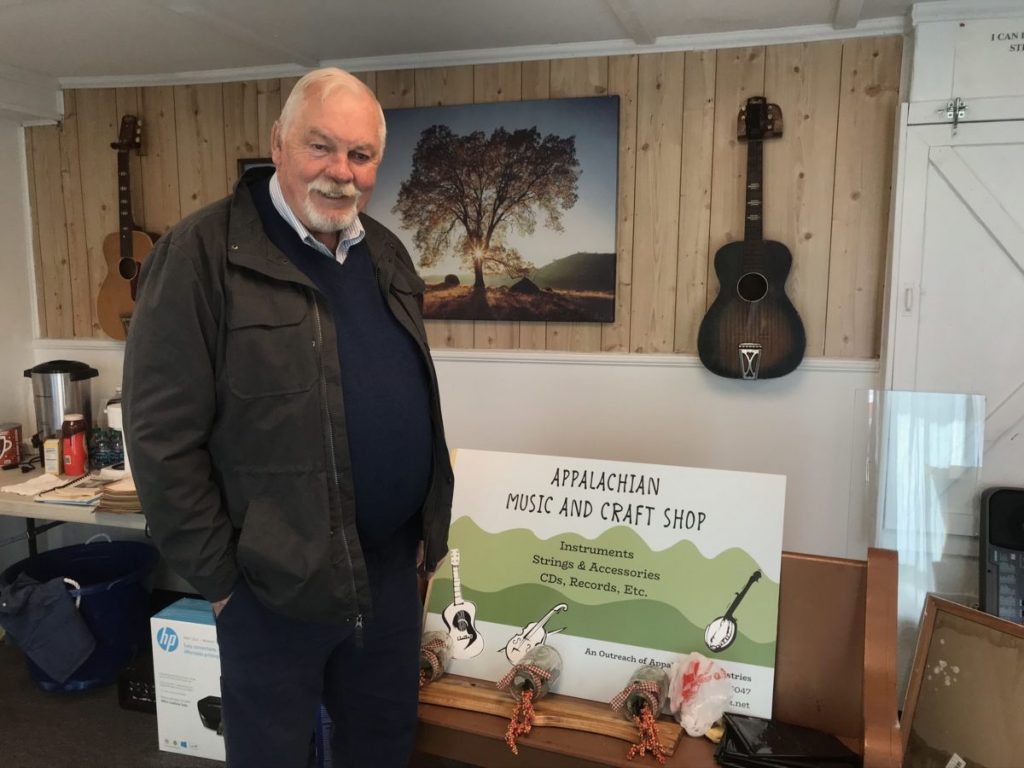
“The second house down that street, there was an old gentleman that lost his life,” he says.
About a two hour-drive to the north, Sarah Bird had gone out to run a few errands that day. A few hours later she couldn’t get back into her small town of Clendenin, located right on the Elk River. She decided to head to a nearby hotel. Then, the bridge leading to the shopping center where it was located washed out. She spent the next two days in that hotel. Much of the region lacked power and employees at the nearby Kroger grocery store barbecued food out of the freezer cases for displaced residents.
When the waters receded and she was finally able to get back, she recalls every moment of that drive.
“Town was devastated,” she says, beginning to cry. “It was gray from the mud.”
She was one of the lucky ones. The waters got close, but they didn’t reach her house. Twenty-three people were killed by the 2016 floods, making it one of the deadliest on record. More than 1,500 homes and businesses were destroyed, and another 2,500 significantly damaged, while losses to highways and bridges totaled about $53 million.
Three-and-a-half-years later, the worst-hit communities are still rebuilding. The National Weather Service would later say the intensity and amount of rain that fell in late June 2016, was of a magnitude expected once in 1,000 years.
Scientists, some state lawmakers and even federal agencies are sounding the alarm that West Virginia’s once-in-a-millennia 2016 downpour that lead to catastrophic flooding is not an isolated event. The hydrologic system that humanity has relied on and built its infrastructure around is changing. The future will be both more intense and more variable.
But as communities rebuild, the state’s response to the climate challenge has been mixed, at best, raising questions about how prepared people will be for the next disaster. While some officials and planning documents do acknowledge the threat of climate change to West Virginia, a state office established after the 2016 flood to enhance resiliency has stalled.
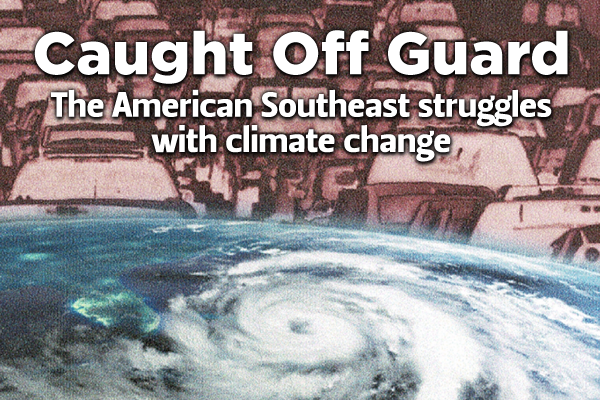
“If we can’t even have conversations in Charleston about what climate change is, and that it’s happening,” he asked, “how can we have hazard mitigation designed in a way that meaningfully protects the public when climate change isn’t even part of that decision making?”
‘1,000-Year Downpour’
Flooding is not new in West Virginia. The Mountain State is one of the most flood-prone states in the country, largely because of the topography. Rain that falls on the state’s mountain peaks eventually runs down into the steep valleys, or hollows. West Virginia experiences both riverine flooding, when streams and rivers overflow their banks, and flash flooding.
In addition, many homes and businesses are near those flood-prone waterways, according to Brian Farkas. Farkas leads the West Virginia Conservation Agency, the administrative arm of the State Conservation Committee, which is charged with overseeing conservation efforts. He said West Virginia has one of the highest stream-to-land ratios on the North American continent. With flat land in short supply, he said much of the state’s development has occurred in the narrow valleys along creeks.
“Floodplains became a natural place for development,” he said. “That’s all well and good until you have a series of rain events, and you have streams that are just doing what streams are designed to do when there is a lot of water: They come out of their bank, they go to the floodplain.”
According to the National Centers for Environmental Information, there have been 2,302 flood events in West Virginia between January 1993 and July 2017, resulting in an estimated $1.8 billion in property damages and 103 deaths. Flood-producing extreme precipitation is the costliest and most severe natural hazard West Virginia faces.
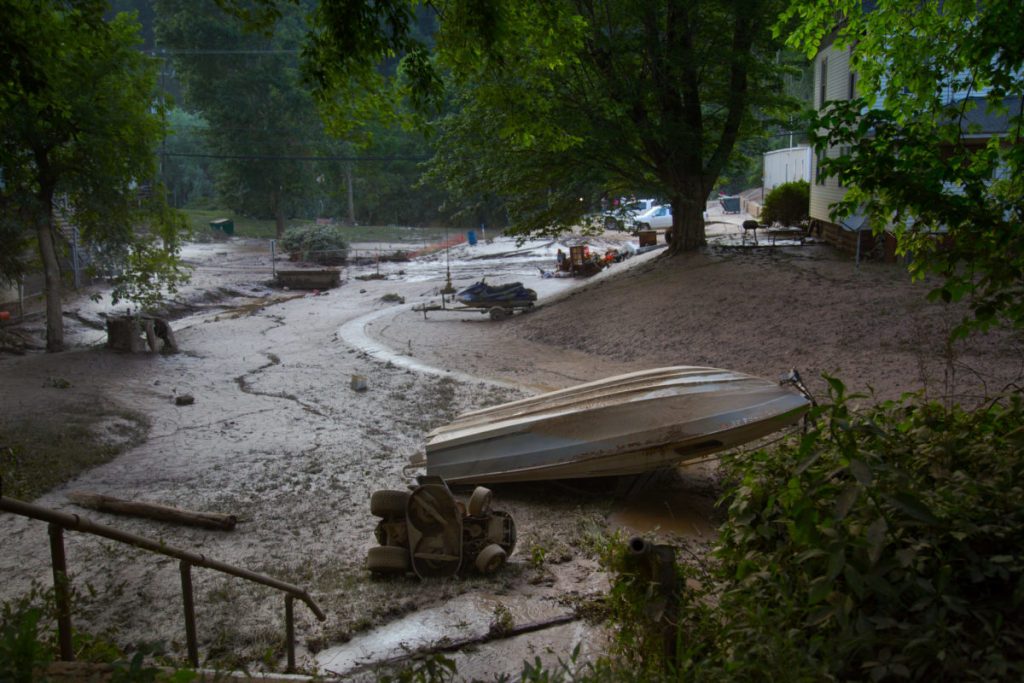
In the first paragraph of the executive summary of a study conducted by the Federal Emergency Management Agency, or FEMA, on lessons learned from the 2016 floods, the agency states that while many residents felt the flooding was as bad as it could get, that’s not true.
“In fact, this type of event could happen more frequently than previously thought,” it states.
Setbacks For Resilience
Following the 2016 floods, the West Virginia Legislature took proactive steps to address flood risk. It passed House Bill 2935, which created a joint legislative committee to address flooding and created a new state office dedicated to boosting resilience.
According to the bill, the stated goal of the newly-created State Resiliency Office was to coordinate “all economic and community resiliency planning and implementation efforts, including but not limited to flood protection programs and activities in the state.” That included updating the state’s flood protection plan “no less than biannually” and recommending legislation to reduce or mitigate flood damage.
In short, the State Resiliency Office and its board were supposed to be the state’s one-stop-shop for making communities better able to withstand catastrophic flooding.
Today, the office is barely functional. It has one employee. State lawmakers are proposing new legislation to reshape its structure.
According to documents obtained under the Freedom of Information Act, despite having three meetings in 2017 to stand up the agency, in June 2018 the State Resiliency Office was told to disband further activities by the state Department of Commerce under which it is currently situated.
The West Virginia Department of Commerce did not make someone available to speak about the State Resiliency Office despite multiple interview requests.
Since then, Adjutant General James Hoyer, head of the West Virginia National Guard, and who was made head of the 2016 flooding recovery efforts in June 2018, said he has largely taken on the duties of the State Resiliency Office.
“I think that’s an important effort going forward,” he said. “But I think what we’ve got to start to look at is how do we build resiliency, not just from the standpoint of disaster, but economic resiliency, and pull all those things together and develop some plans going forward.”
When asked to what extent the Guard or other agencies working on flood recovery are factoring in climate change in building resiliency, Hoyer said it’s not something he’s thinking about.
“I would tell you as the guy in uniform, you know, my job’s not to get into those debates,” he said. “My job is to address the long term, you know, resiliency piece going forward.”
Missing Element
House Bill 2935 also created the Joint Legislative Committee on Flooding. Members like Democratic state Sen. Stephen Baldwin, said the body has focused on the state’s botched flood recovery response efforts and not flood prevention as its charter states.
“You used the term climate change, and to my knowledge, that term has not been used ever in a joint flood committee,” he said.
The committee’s charter said it has a statutory obligation to consider how West Virginia can be better prepared in the face of future flooding by studying “flood damage reduction and floodplain management” as well as “flood protection.” In a September letter to the committee’s chairs, Baldwin and fellow Democratic Sen. Glenn Jeffries expressed concerns that the committee could be doing more on prevention. Baldwin said while he understands recovery is important, factoring in the future climate is important to lessening the impacts of flood disasters.
“The specific constitutional charge of the flood committee is flood prevention. I mean, it uses that terminology several times,” he added. “But, you know, from a very general 30,000-foot view, the committee has done no work on flood prevention so far.”
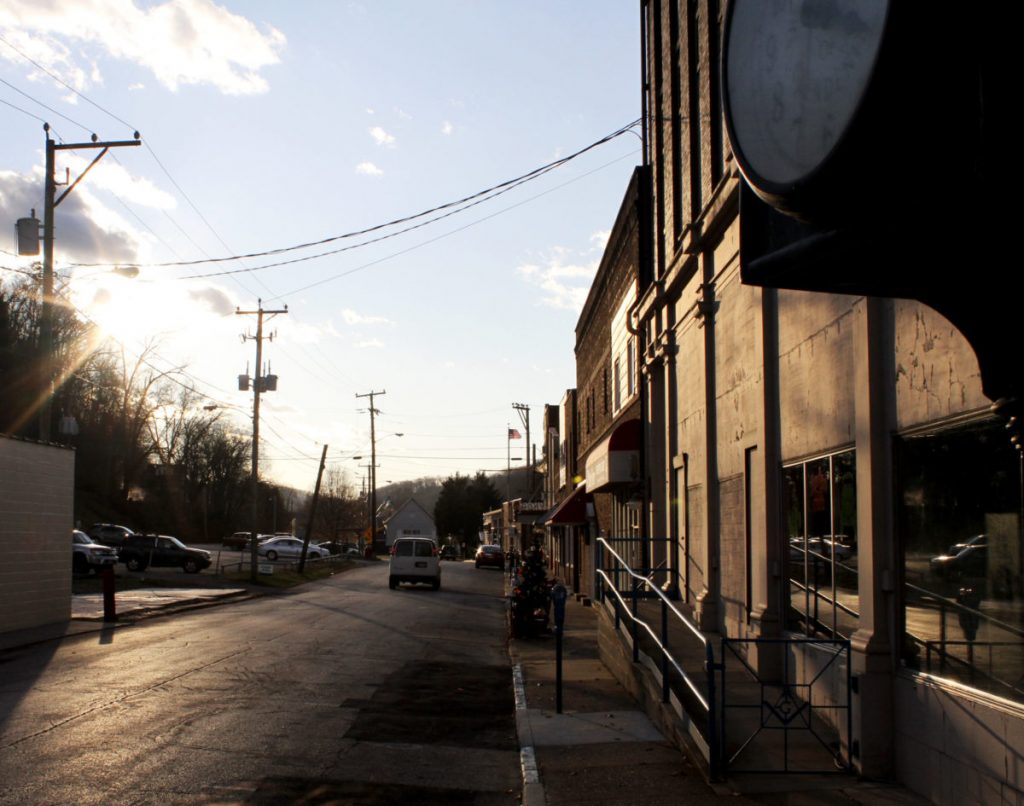
Republican state Sen. Chandler Swope is one of the chairs. Moving forward, he said he expects to focus more on prevention and pointed to recent presentations made to the committee from a firm familiar with disaster recovery in Puerto Rico. When asked specifically if climate change is being incorporated into the committee’s prevention efforts, Swope said the body is not planning for a specific future, but said any resilience work being done in the state will help.
“But climate change has been happening for millions of years and it’s going to continue to change and you just have to deal with it,” he said.
The state doesn’t have a great track record when it comes to implementing its own recommendations to reduce flooding. In 2001 after another historic flood, a panel came together and developed a set of comprehensive recommendations to reduce the damage from flooding. As reported by The Charleston Gazette-Mail, the report sat on the shelf collecting dust.
The state’s Hazard Mitigation Plan updated in 2018 does explicitly mention the threats West Virginia faces from a changing climate, including the impact of intense rainfall events.
“If climate change has an effect on those things over a period of time, if we’re trending towards a dryer or it’s going to be wetter, then those are factors we considered in the mitigation plan,” said Lonnie Bryson, recovery grants section chief for the West Virginia Department of Homeland Security and Emergency Management. “So we can mitigate the things we’re aware of. But 2016 was just such a magnitude that there’s no predicting that.”
Scientists, like Nicolas Zegre at WVU, said it’s true that researchers cannot be certain about future natural disasters, and they can’t say when a precipitation event like 2016 will happen again.
But they say the models are clear, and more intense precipitation events are expected.
“Nothing is going to be meaningful unless we have honest conversations about climate change and what it means for West Virginia,” he said.
For homeowners, some resilience is being incorporated in the rebuilding efforts that have occurred since the 2016 floods, largely driven by federal standards.
Federal Backstop
On a recent drive through Rainelle, the neighborhoods do look markedly different than they did just a few years ago. Spray painted X’s mark homes now abandoned that will eventually be torn down. Most of those that have been rebuilt are obvious — they tower 8 to 12 feet above their neighbors. That’s intentional.
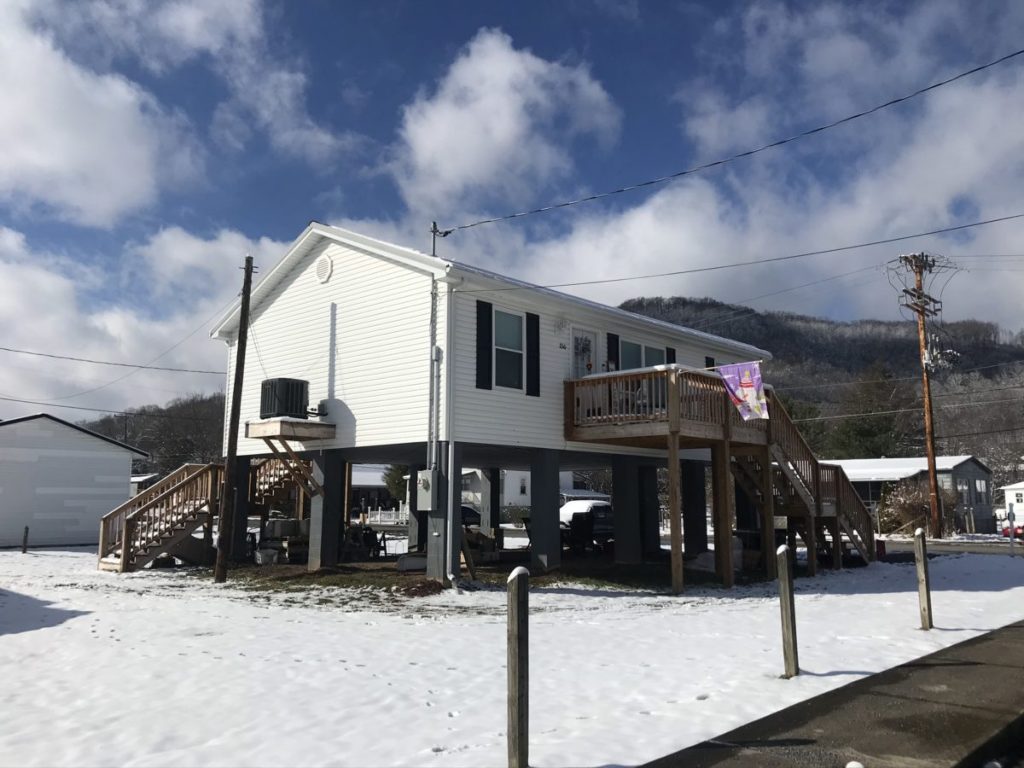
According to a FEMA spokesperson, homes that are reconstructed using Hazard Mitigation Grant program dollars are built two feet above the required base flood elevation, or 100-year floodplain, in West Virginia.
But the Trump administration in 2016 also rescinded an Obama-era executive order that tasked agencies to incorporate climate change into proposed infrastructure projects. FEMA had been soliciting input and drafting new rules.
Carolyn Kousky is executive director of the Risk Management and Decision Processes Center at the University of Pennsylvania’s Wharton School, which for 35 years has studied disaster risk management. She said the order would have created uniform guidance on rebuilding and incorporating changing flood conditions due to climate change. As it stands, states and municipalities largely set the tone for how climate change is incorporated into rebuilding homes and infrastructure.
“I think a lot of it is left up to what local governments choose to do,“ she said. “Smaller and less affluent communities might not have the resources or the expertise.”
Improving Data
In the aftermath of the 2016 floods, FEMA put out a press release that said West Virginia is more resilient and better prepared. The agency funded new maps in eight of the areas hardest hit by flooding in June 2016, a spokesperson said.
The agency also invested in a digital flood mapping tool, one of the first in the country to cover an entire state. The WV Flood Tool has been in production since 2007, but investment after the 2016 floods allowed project developers to expand the project to provide communities with a detailed picture of flood risk and landslide risk.
Under the “risk” tab, users can not only see their flood risk per FEMA’s 100-year floodplain maps, but, if available, FEMA’s updated flood maps. All critical infrastructure — hospitals, schools, utilities — are mapped on the tool to the 500-year floodplain.
“We’re going to be able to identify the risk, or be able to map that in detail like it’s never been done before statewide,” said Kurt Donaldson, manager of the WV GIS Technical Center at West Virginia University and project manager for the flood tool.
He said advances in technology in the last decade have made creating a centralized flood risk tool possible, but he also said the project only focuses on riverine flooding and landslide risk and can only input data it has available, and much of that data doesn’t take into consideration future climate change.
Relying on FEMA floodplain maps to assess flood risk is problematic because the maps were created to serve the agency’s insurance program, said Larry Larson, director emeritus and senior policy adviser for the National Association of State Floodplain Managers. The maps notoriously don’t cover all flood risk.
“It has become the flood risk standard, and that’s unfortunate, but that’s how people perceive it,” he said.
In West Virginia, most counties have adopted a “model floodplain ordinance” that goes beyond FEMA’s National Flood Insurance Program minimum guidelines. As a result, in most places new structures built in the floodplain to be raised an additional two feet above the 100-year floodplain.
Ray Perry, the floodplain manager for Logan County and head of the West Virginia Floodplain Managers Association, said the requirement is helpful to create a buffer against flooding but he would like to see the state go further and create a similar model ordinance for building codes.
“If you’re one of the people that the floodplain ordinance doesn’t necessarily apply to you because you’re not in a floodplain, you can’t enforce it on somebody,” he said. “Without the building code, then you’re just doomed to repeat it over and over.”
New Attitude
Inside John Wyatt’s music and craft shop in downtown Rainelle guitars and banjos line the walls. He says more than three years after the flooding most of the renovations are complete and he hopes to open the store to the public soon.
Reminders of the flood still remain. Across the street an Exxon gas station is empty, the cost of Supreme $2.99 in perpetuity. Next door, a sign advertises an auction for the Rainelle Motor Lodge. The motel was abandoned after the flood.
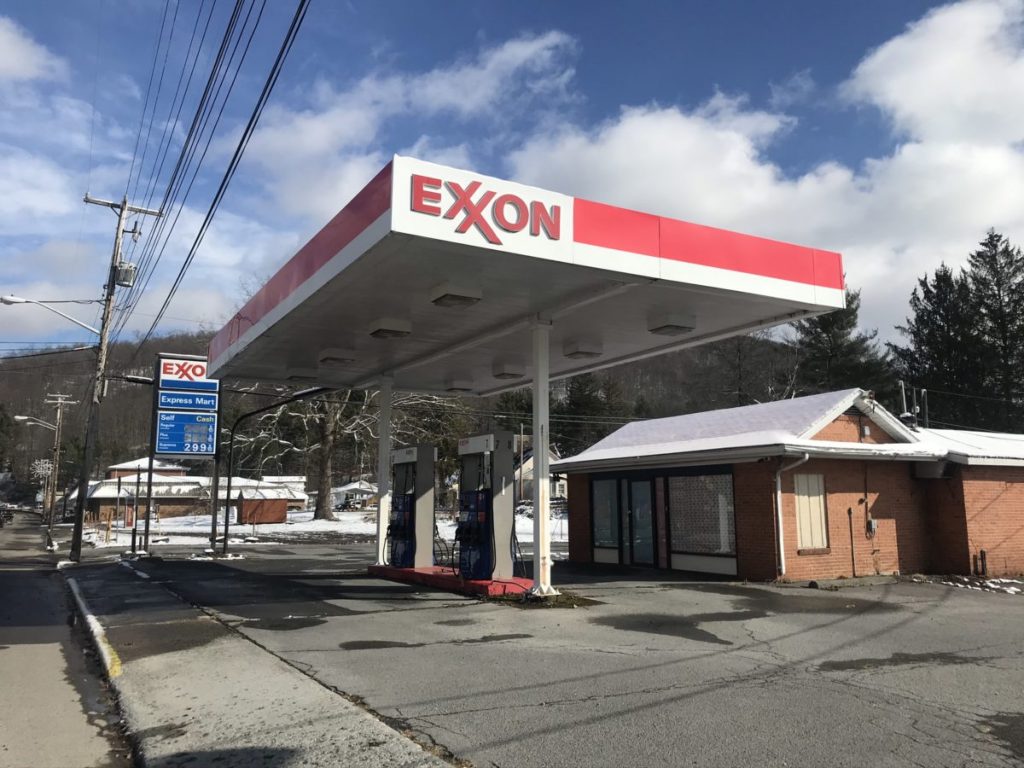
“But you know, we don’t have a crystal ball to look in and know what’s going to happen in the future,” he said. “We’re working on some issues with that to try to help the flood control in town. It’s a long process, and we hope that we can work all together and make that happen, but at the same time, you know, things like this just take time.”
Wyatt is now a city council member in Ranielle. He and others are thinking about the future of this coal turned timber town that has been struggling in recent decades. The community is raising money to build a community center and he hopes Rainelle can become a destination for tourists traveling the scenic Midland Trail. He said while the town is still struggling — dozens of structures still need to be torn down, for example — the flooding also changed his thinking about the place he’s lived much of life.
“Maybe the most important new construction has been the attitude of the people because they’re beginning to see Rainelle as a town that can survive, that’s not going to die, that does have hope for the future,” he said.
This story was produced in partnership with InsideClimate News, a nonprofit, nonpartisan news outlet that covers climate, energy and the environment. Caught Off Guard was produced as part of ICN’s National Environmental News Network.

